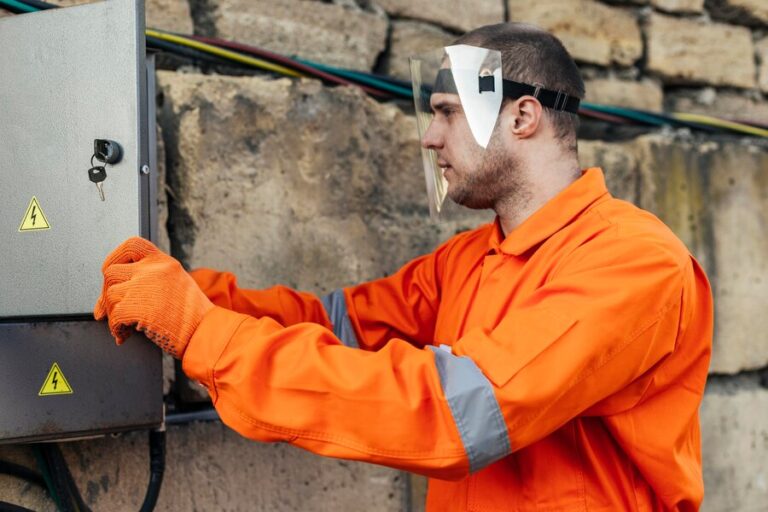Electric motors are the unsung heroes of modern industry, powering everything from pumps and compressors to conveyors and generators. While they are designed to be rugged and reliable, motors still require regular maintenance to ensure optimal performance, efficiency, and longevity. Neglecting motor maintenance can lead to reduced productivity, increased energy consumption, and even catastrophic failures, resulting in costly repairs and downtime. In this article, we’ll delve into the importance of motor maintenance, explore the different types of maintenance, and provide a comprehensive guide to creating an effective motor maintenance program.
Why Motor Maintenance Matters
Electric motors are intricate machines consisting of complex components, including bearings, windings, and gears. Over time, these components can wear down, causing reduced efficiency, increased energy consumption, and eventual failure. Motor maintenance is essential to:
1. Improve Efficiency
Regular maintenance helps to identify and address energy-wasting issues, such as misaligned couplings, worn bearings, or faulty windings, ensuring motors operate at optimal efficiency.
2. Extend Motor Life
Proper maintenance can significantly extend the life of a motor, reducing the need for frequent replacements and minimizing downtime.
3. Reduce Energy Consumption
Well-maintained motors consume less energy, leading to cost savings and a reduced carbon footprint.
4. Enhance Reliability
Regular maintenance helps to identify potential issues before they escalate, ensuring motors operate reliably and minimizing the risk of unexpected failures.
5. Improve Safety
Motor maintenance is critical to ensuring the safety of personnel and equipment, as faulty motors can pose a risk of electrical shock, fire, or mechanical failure.
Types of Motor Maintenance
There are three primary types of motor maintenance: predictive, preventive, and corrective.
1. Predictive Maintenance
This approach uses advanced technologies, such as vibration analysis, thermal imaging, and motor current signature analysis, to predict potential issues before they occur. Predictive maintenance is ideal for critical motors or those operating in harsh environments.
2. Preventive Maintenance
Preventive maintenance involves regular tasks, such as cleaning, lubricating, and inspecting motors, to prevent issues from arising. This approach is suitable for most motors and helps to reduce downtime and energy consumption.
3. Corrective Maintenance
Corrective maintenance involves repairing or replacing motors after they have failed. While necessary, corrective maintenance is often the most costly and time-consuming approach.
Creating an Effective Motor Maintenance Program
Developing a comprehensive motor maintenance program requires careful planning, execution, and ongoing monitoring. Here are some essential steps to follow:
1. Conduct a Motor Inventory
Compile a detailed inventory of all motors, including type, size, age, and operating conditions. This information will help you prioritize maintenance activities and allocate resources effectively.
2. Establish Maintenance Schedules
Create a schedule for regular maintenance tasks, such as cleaning, lubricating, and inspecting motors. Consider the operating conditions, motor type, and age when determining the frequency of maintenance.
3. Train Maintenance Personnel
Ensure that maintenance personnel are trained and equipped to perform tasks effectively. Provide regular updates on new technologies, techniques, and best practices.
4. Implement Condition-Based Maintenance
Use condition-based maintenance techniques, such as vibration analysis or thermal imaging, to monitor motor health and identify potential issues before they occur.
5. Keep Accurate Records
Maintain detailed records of all maintenance activities, including dates, tasks performed, and any issues identified. This information will help you track progress, identify trends, and optimize your maintenance program.
6. Perform Regular Motor Testing
Conduct regular motor testing, such as megger testing or surge testing, to ensure motors are operating within specified parameters.
7. Store Spare Parts and Materials
Maintain an inventory of spare parts and materials, such as bearings, windings, and lubricants, to minimize downtime in the event of a failure.
Common Motor Maintenance Tasks
Some common motor maintenance tasks include:
1. Cleaning
Regularly clean motors to remove dirt, dust, and debris that can reduce efficiency and increase wear.
2. Lubricating
Lubricate bearings and gears to reduce friction and wear. Ensure the correct type and amount of lubricant are used.
3. Inspecting
Inspect motors regularly to identify signs of wear, such as overheating, vibration, or unusual noises.
4. Tightening
Regularly inspect and tighten electrical connections, bolts, and screws to ensure secure and reliable operation.
5. Replacing
Replace worn or damaged components, such as bearings, windings, or gears, to maintain optimal performance and efficiency.
Advanced Motor Maintenance Techniques
Some advanced motor maintenance techniques include:
1. Vibration Analysis
Use vibration analysis to identify potential issues, such as imbalance, misalignment, or bearing wear, before they cause catastrophic failures.
2. Thermal Imaging
Employ thermal imaging to detect overheating or electrical issues, allowing you to address problems before they escalate.
3. Motor Current Signature Analysis
Use motor current signature analysis to identify issues, such as winding faults or bearing wear, by analyzing the motor’s electrical signature.
4. Oil Analysis
Analyze motor lubrication oil to identify signs of wear, contamination, or degradation, enabling proactive maintenance and extending motor life.
Conclusion
Motor maintenance is a critical aspect of ensuring the reliability, efficiency, and longevity of electric motors. By understanding the importance of motor maintenance, the different types of maintenance, and the steps to create an effective maintenance program, you can minimize downtime, reduce energy consumption, and enhance safety. Remember to stay up-to-date with the latest technologies, techniques, and best practices to optimize your motor maintenance program and reap the benefits of improved motor performance.
Frequently Asked Questions
How often should I inspect and maintain my motors?
The frequency of inspection and maintenance depends on the motor type, operating conditions, and age. As a general rule, inspect motors every 1-3 months and perform maintenance tasks every 6-12 months.
What are the most common causes of motor failure?
The most common causes of motor failure include overheating, electrical surges, bearing wear, and winding faults.
Can I perform motor maintenance tasks in-house?
Yes, many motor maintenance tasks can be performed in-house with the right training, equipment, and resources. However, more complex tasks or those requiring specialized expertise may require outsourcing to a qualified service provider.
How can I reduce motor maintenance costs?
Reduce motor maintenance costs by implementing a preventative maintenance program, using energy-efficient motors, and optimizing motor operating conditions.
What are the benefits of using advanced motor maintenance techniques?
Advanced motor maintenance techniques, such as vibration analysis and thermal imaging, can help identify potential issues before they occur, reducing downtime and energy consumption, and enhancing safety.







